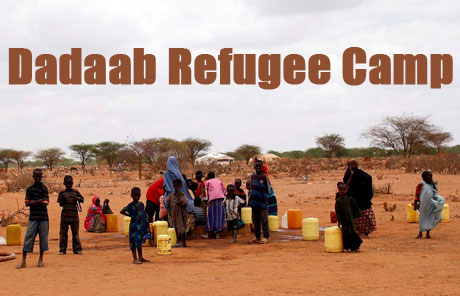
China daily reporter and photographer Li Lianxing and Zhang Wei visit the world's biggest refugee camp in Dadaab, Kenya. In Dadaab, food and space are extremly scarce. The place was designed to accommodate 90,000 people in the early 1990s, but now, the population has exceeded 430,000 and more are pouring into it every day. They say it will reach half a million by the end of the year, effectively a Somali refugee city inside Kenya's borders.
Text: Li Lianxing
Pictures: Zhang Wei
Producer: Flora Yue
Camp leaves refugees hopeless
By Li Lianxing
When our jeep drove into the wild bushes, I asked the local UNHCR staff where the refugee camp was. "We are already in it," they replied.
With no fence or border, the largest refugee camp is an open and natural residential compound on the Kenya-Somalia boarder. Its existence and expansion pose a serious challenge to the Kenyan and Somalia governments, as well as to countries offering humanitarian aid. Living a peaceful life for ordinary people has become a luxury dream.
Dadaab is like a Somali refugee city within the Kenyan border. Ninety-eight percent of people who live in the camp are from Somalia. When we walked inside, most of them were expressionless. Long lines are the most conspicuous feature of the camp. They're everywhere, in the food distribution center, in the health care posts and in the firewood distribution point. Standing in line is part of their daily routine and seems to be the only thing they can do. For so many of them, this kind of life has lasted for more than 20 years.
As a place without any productivity, international organizations and non-government organizations have been providing them with basic living conditions for so long. They are trying to keep the bottom line of humanity. But what if all these organizations eventually leave? Where would the residents go?
In some places that I have been to, refugees have asked us if we were Turkish. I asked them why they always ask that question, and they told me they liked Turkish people because they brought refugees their favorite spaghetti and built temporary mosques in the camps. However, some of them have been living on the WFP and other food aid for more than 20 years. Still, nearly everyone I encountered complained the shortage of food in the camp.
Demarcation defines a nation state. The existence of Dadaab has brought serious security concerns to Kenyan authorities. It took 20 years to form this camp, and if there is any chance, how long will it take to dissolve this camp and send the people back?
I still remember, when I asked Katima Abdi if there was any hope for her life, she fell silent for more than 30 seconds and then told me no, saying she even didn’t know what hope was. As the security situation in Somalia is escalating, the camp and its refugees will keep moving on for the foreseeable future.
There is some hope for the younger generation. Our interpreter, Abdi Adan Hussain, is a senior resident in the camp. He and his family moved into Dadaab 20 years ago. His 24-year-old sister married a local Kenyan and left the camp. Hussain is doing his college study via long-distance study. He told me integration into the local community is both easy and difficult. It's easy because they share the same religion, language and other cultural traditions, while it is extremely difficult for refugees to obtain a legal status in Kenya. Still, he doesn’t want to go back home and is striving for his a life in Kenya.
Slideshow: Dadaab Refugee Camp
